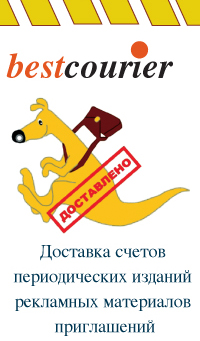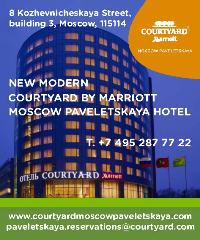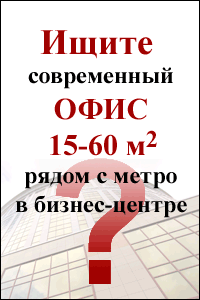Air France living up to its traditional ‘bridging role’ in Russian-French relations

As you probably know, this interview will be published in a special report on Russian-French business relations. In this regard, how can your airline help boost these relations further?
Boosting these ties is very important, especially this year, which has been declared the ‘Year of Russia in France and the Year of France in Russia.’ For one, our airline is one of the key partners of these events. It is a duty for Air France, as airline, which is a sort of a bridge linking up these two great nations to participate in these programs and events, including financially, and help contribute to their successes. Also, Paris, as a city, is the No. 1 international destination for Russian travelers, as the city is very popular among Russians. Just recently, a “Sainte Russie” Icons Exhibition, featuring the most treasured icons from all over Russia, was held at the Louvre Museum, and our airline carried Russian customers that wanted to see these unique religious and historical objects. You, probably, know that one of the finest bridges across the Seine in Paris was built for Alexander III, one of Russian tsars, whose name the bridge still bears today. So, you can see that the bilateral cooperation between France and Russia today did not start yesterday, but dates back to several centuries ago.
How would characterize the key elements of your airline’s business development strategy for the Russian market today?
One of these key elements in our business development strategy for this market envisages the development of special products that are completely adapted to fully satisfy our Russian travelers’ expectations. This means the ability to think like our Russian customers, anticipate their traveling needs and expectations and then offer the services that meet these requirements.
“One of the key elements of our business development strategy envisages the development of special products that are completely adapted to fully satisfy our Russian travelers’ expectations.”
A perfect example of this strategy is our special ‘Phoenix project’ for Russia, named after Air France’s first similar project on the U.S. market on Phoenix route. This term has long become a generic name for our products/services that are specially and fully adapted to customer needs on any market. This project is aimed at better serving our Russian customer in Russia, on board, at Roissy, on our Internet sites, etc. The second component is the establishment of mutually beneficial partnership. Russia is the world’s largest country in terms of geographical landmass, and therefore, it is impossible for anyone, including our airlines, to achieve a lot on this extremely vast market without going into some form of partnership with local carriers. In this context, we are very proud of our ongoing cooperation with Aeroflot, which has been very helpful to both parties. For us, it has enabled us to gain some competitive edge in Russia, and similarly, through us, Aeroflot, has also been able to boost its position on the French and other EU markets. Within our SkyTeam alliance, Air France, KLM, Aeroflot and all others are also building a unique and strong network of partnership around the world. Another good example of partnership is the North Atlantic Joint Venture with Delta, Air France, KLM and Alitalia, and the unique best offer we can now provide to our customers on trans-Atlantics routes.
You have just referred to Aeroflot, Russia’s No. 1 airline, as a partner. In this regard, how would characterize the level of competition between major local and foreign airlines in Russia?
Yes, Air France and Aeroflot are competitors because they do not benefit from any antitrust immunity that would have allowed them to do otherwise. However, being competitors does not mean that there are no rooms for cooperation for the interests of clients on certain routes or destinations. For instance, thanks to such cooperation, combinations of efforts and strengths, Air France and Aeroflot now can offer to customers between Moscow and Europe. The gains for clients come from the convenience of being able to link up and travel to any destination. This stems from the expansion of the Sheremetyevo International Airport, which will make it even more convenient to connect with any city in Russia, and also the fact that Russia is one of the world’s fastest growing transit hubs. Combining all these with the capabilities on the French side at the Paris hub, which can practically link up with almost all the destinations in the world, it means our customers can fly almost any destination of their choice in the world. Yes, we are still competitors — Aeroflot develops its products, and we also develop our independent products and service offers, but at the same time, we also believe that there are always some added values — both to our airlines and customers — in combining our individual strengths, not only in terms of route networks, but also our countries’ hubs, for the benefits of clients.
Continuing the previous questions, what would you call your competitive advantages that set your airline apart from the rest – both from its partners and competitors – on this market?
One of these is our network; the strength of this comes from the fact that our network is almost equally distributed on all major routes and destinations across the globe, thus enabling us to carry customers to any destination of their choice. The second is our hub in Paris, which unlike most other hubs, still has a huge potential growth capacity to handle more passenger traffics. The other is our fleet, which is among the youngest in the European airline industry, and the benefits from this for clients include, amongst others, higher level of comfort. Ànd, finally, our products, some of which are unique in the industry. For instance, our specific Premium Economy Class on the Moscow-Paris flights, which offer services between the traditional Business and Economy classes, and is meant for travelers that have been hard hit by the crisis but still want to keep their traditional traveling habits at affordable rates. This service is very popular among business travelers. I could mention as well innovation since we were the first European airline to operate A380 "La Premiere" unique top class product on long haul destinations.
The Air France-KLM alliance was created in the largest corporate merger in the European airline industry in 2004. How would you briefly highlight the merger’s positive synergy for the company and industry?
To start with, I need to note that we are operating in an industry that is scattered across the globe. Indeed, today, there are almost as many airlines as the number of countries in the world, with some or several of them being the national carriers of their countries. So, it was only logical that mergers amongst companies became a necessity. Indeed, I can say the airline industry, for example, in this context was merely following the footsteps of the global auto industry, where such corporate mergers between market leaders started several years ago. As for us – Air France and KLM – the merger was an absolute necessity for several reasons, first and foremost, for the benefits of our customers, including wider offer and more flexibility. At that time, the main issue for us was not whether or not to merge, but how to find the right partner to merge with. And the choice of Air France and KLM seemed a perfect match as both airlines had very complementary network and both were aviation leaders, making Air France-KLM after merger the world's ¹ 1 airline. This means that each airline brought on board its networks across the globe that the other did not have. All these are beneficial to customers.  For instance, we now offer one of the best joint loyalty programs, more diverse routes and destinations as well as high flexibility in travelling arrangements as our customers can fly via Paris or Amsterdam. We also offer what we call a “3-for-1” product, which enables customers to get three European destinations for the price of one. In practice, this means a passenger can stop at Paris, at the Charles de Gaulle Airport, then move over to his/her final destination, and on return, stop over at Amsterdam, at the Schiphol Airport. This is unique because no other airlines have two such vital hubs like the Air France-KLM group to offer a similar service. Besides, the merger was also good for both Air France and KLM as companies because it led to optimization of overhead and fixed costs, boosted our purchasing and bargaining capabilities with third parties. I need to note here that it was a conscious and logical decision to retain the companies’ individual brand identities, again, because of customer's convenience. This is because some travelers prefer to fly only with Air France, while others want only KLM. We have to respect such decision. Finally, post-merger market trends have shown that the decision to form this group was a right one. This is evident from the fact that our business model is being copied by other airlines in our industry.
For instance, we now offer one of the best joint loyalty programs, more diverse routes and destinations as well as high flexibility in travelling arrangements as our customers can fly via Paris or Amsterdam. We also offer what we call a “3-for-1” product, which enables customers to get three European destinations for the price of one. In practice, this means a passenger can stop at Paris, at the Charles de Gaulle Airport, then move over to his/her final destination, and on return, stop over at Amsterdam, at the Schiphol Airport. This is unique because no other airlines have two such vital hubs like the Air France-KLM group to offer a similar service. Besides, the merger was also good for both Air France and KLM as companies because it led to optimization of overhead and fixed costs, boosted our purchasing and bargaining capabilities with third parties. I need to note here that it was a conscious and logical decision to retain the companies’ individual brand identities, again, because of customer's convenience. This is because some travelers prefer to fly only with Air France, while others want only KLM. We have to respect such decision. Finally, post-merger market trends have shown that the decision to form this group was a right one. This is evident from the fact that our business model is being copied by other airlines in our industry.
Going by experts’ comments, we are finally exiting the current economic crisis. In this regard, how, going forward, do you see your company and its position in the post-crisis economy?
I would like to note as a way of clarification that we are exiting one crisis and heading, probably, to another. This is because the aviation industry is, by nature, highly susceptible to crises — political, economic, medical, natural disasters, etc. Indeed, the global airline industry has been in and out of crises several times in the last 20 years, with the recent ones including September 11, SARS and swine flu (HINI) pandemic, the Asian economic meltdown, the current global economic crisis and lastly, the devastating eruptions of Iceland’s Eyjafjallajokull Volcano in April 2010. All these crises had negative impacts on the industry. So, we are basically used to coping with all types of crises in our industry. We do not know when the next crisis will break out, but most airlines, including ours, already have in place the contingency plans to handle it. Firstly by our ability to quickly adapt to such exigencies, and by ‘quickly’ I mean the speed to relocate flights from one destination to another within a very limited timeframe, is in the airline industry’s ‘gene and blood.’ This quality - flexibility and mobility - is one of the key assets that helps the industry to survive during bad times, as it is a lot easier to relocate flights than, for instance, huge industrial plants. The second is the tough pressure we put on operational costs. In normal conditions, the profit margin in the industry is already slim, but last year, some airlines posted revenue loss of 20-25%, and still survived. This feat is only possible in our industry, because of the high adaptability of airlines’ networks, cost structure and also because the traveling needs of customers will continue to grow year on year.












 Web design,
Web design,